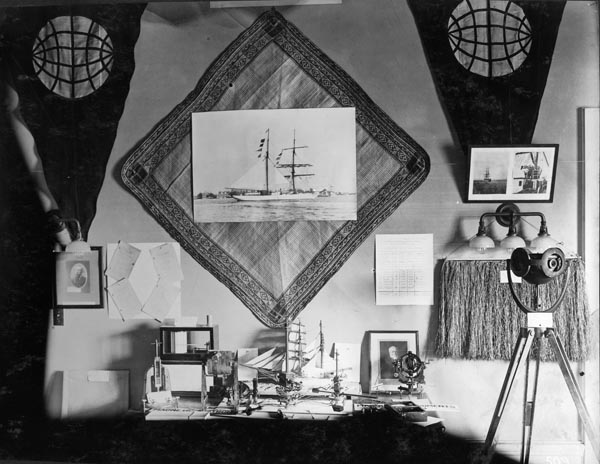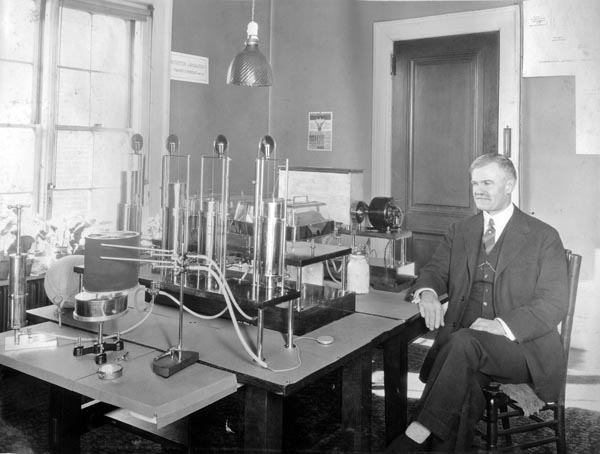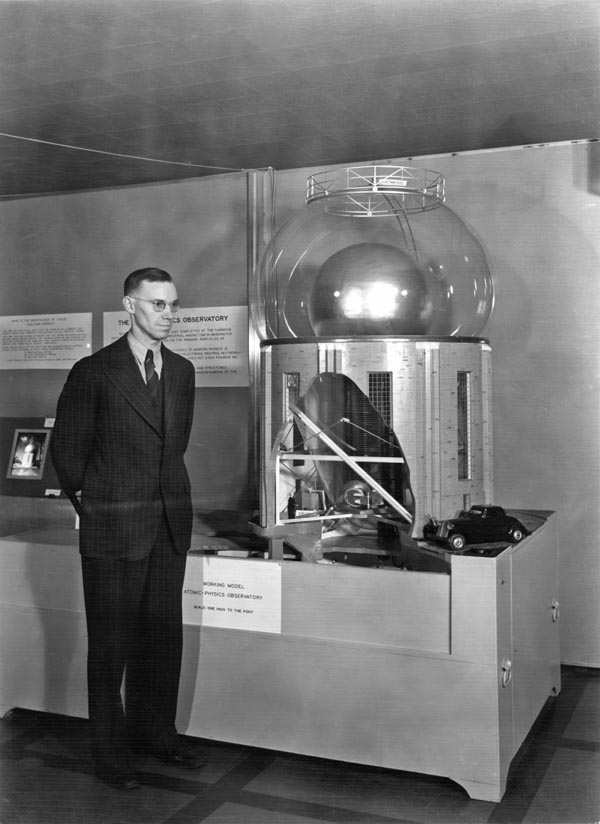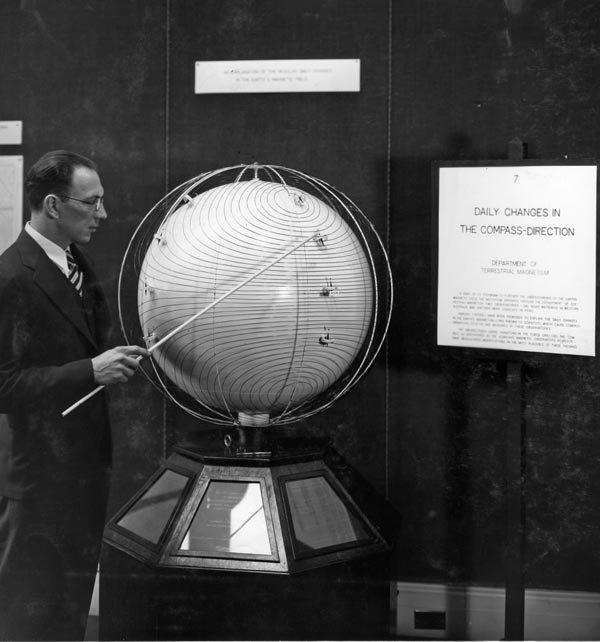Public Exhibitions
“Science deals with reality; a scientific exhibit can illustrate reality by objects, but such objects can only approach the realities of science which are essentially ideas.” – Notes on Institution Affairs: Excerpts from the Report of the 1933 Exhibition Committee
 |
| Department of Terrestrial Magnetism 1921 exhibit, Image No. I509. |
In the 1920s and 1930s, the Carnegie Institution of Washington emphasized public engagement as a critical component to the success of the institution. Each year in December, visitors to the Institution’s headquarters had the opportunity to engage directly with scientists and the apparatus with which they worked at the three-day Annual Exhibition. According to CIW’s report on the 1928 exhibition, the purpose of the event was to highlight the current research of the Institution and give “the visitor a balanced, connected impression of its [the Institution’s] significance and of the interrelationship of its activities.” Comprised of selected exhibits from each of CIW’s various departments and a series of lectures, the exhibition played the central role in CIW’s public engagement initiatives, and as such the institution put great efforts into ensuring its success.
 |
| 1927 display for the Nutrition Laboratory, Image No. I1336. |
Each year, an Exhibition Committee, comprised of seven to eight members of CIW’s scientific and administrative staff appointed by CIW’s president in January, had the task of organizing the Annual Exhibition. They selected a variety of material from current CIW research to feature at that year’s exhibition and notified individual scientists. The committee grappled with the issue of how to best educate the public while maintaining their interest. They found that having an underlying big picture concept to convey was important both for the visitor’s comprehension and for the exhibition’s perceived obligation to the “interpretation of the function of research in a civilization overbalanced by mechanical efficiency.” Also, working instruments helped to instill a sense of reality to the exhibits. The committee found that the most important element to keeping the exhibits interesting, however, was to have the scientists present to explain their work to the public; a scientist could impress visitors with “his authority” and “his honest, unmistakable enthusiasm” for his subject.
|
|
 |
 |
| DTM 1934 exhibit, Image No. I3581. | DTM 1939 exhibit, Image No. I5601. | R. E. Gibson with Geophysical Laboratory 1931 exhibit, Image No. E078. |
The efforts of the committee to improve the exhibitions were generally successful; in the period from 1925 to 1931, the exhibition saw a general rise in attendance, from 2305 in 1925 to a peak of 4308 in 1930, and the committee received positive comments and constructive criticism from the events’ attendees.and investigators in the early summer so that they could begin to prepare their displays. That the scientists arranged their displays and exhibits themselves was a unique feature of the project, and, according to the committee’s 1933 report, the exhibitors often enjoyed the experience and appreciated the significance of the Exhibition to their work even if at first they had only grudgingly agreed to participate.
 |
| L. R. Hafstad with model of the Atomic Physics Observatory for 1938 DTM exhibit, Image No. I5173. |
 |
| DTM scientist Lloyd Berkner demonstrating at the 1936 exhibition, Image No. I4224. |
In one successful exhibit, Drs. L. V. Berkner and H. W. Wells, scientists at the Department of Terrestrial Magnetism, designed a display about their ionospheric research and were on hand to answer any questions the visitors had during the 1936 Annual Exhibition. The display consisted of a multifrequency automatic ionospheric sounder that Berkner had designed as well as an electrically operated panel illustrating the principles of its operation, which can be seen in the photograph at right. With the display, Berkner demonstrated the ways in which his team’s research and apparatus helped to address a larger problem in terrestrial magnetism, that of the need to understand the upper atmosphere. Thus, he made the public aware of larger scientific concerns and updated them on his own research progress, a stated goal of the Exhibition Committee.
 |
| Part of the Geophysical Laboratory exhibit at the 1952 exhibition, Image No. I9775. |
The photograph collection includes rare images from Carnegie exhibitions dating from 1921 to 1940, with a few photos dating to 1952. Copies of DTM display exhibit labels are included in the collection for selected years. These photos show how the Annual Exhibition evolved as the Exhibition Committee implemented different strategies to improve the experience of the visitor. As a whole, the photos illustrate the ways in which groundbreaking scientific research was disseminated to an interested public in the 1920s and 1930s, when the exhibitions served a primary role in the public engagement efforts of the Carnegie Institution.

